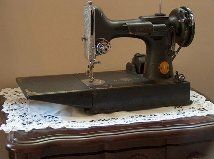Each of us probably have holidays through out the year that we especially look forward to and then there are holidays or observances that we just don’t pay that much attention to, unless maybe we get a day off from work. Even then, we probably are just glad to not have to go to work. I’m afraid that for many Memorial Day is such a day. We just go about our busy day and never think of what the day actually means. I’m sorry to say that I have been guilty of that more times than I care to think about so I thought that it would be interesting to learn more about the history behind Memorial Day.
Memorial Day was officially proclaimed on May 5, 1868 by General John Logan, national commander of the Grand Army of the Republic declared in General Order No. 11 that:
“The 30th of May, 1868, is designated for the purpose of strewing with flowers, or otherwise decorating the graves of comrades who died in defense of their country during the late rebellion, and whose bodies now lie in almost every city, village, and hamlet churchyard in the land. In this observance no form of ceremony is prescribed, but posts and comrades will in their own way arrange such fitting services and testimonials of respect as circumstances may permit.”
The date of Decoration Day, as Gen. Logan called it, was chosen because it wasn’t the anniversary of any particular battle.
The first state to officially recognize the holiday was New York in 1873 and by 1890 it was recognized by all of the northern states. The South refused to acknowledge the day, honoring their dead on separate days until after World War I (when the holiday changed from honoring just those who died fighting in the Civil War to honoring Americans who died fighting in any war).
In 1966 President Lyndon Johnson officially declared Waterloo, New York, the official birthplace of Memorial Day. Waterloo—which had first celebrated the day on May 5, 1866—was chosen because it hosted an annual, community-wide event, during which businesses closed and residents decorated the graves of soldiers with flowers and flags.
On the first Decoration Day, General James Garfield made a speech at Arlington National Cemetery, and 5,000 participants decorated the graves of the 20,000 Union and Confederate soldiers buried there.
In 1915, Moina Michael was inspired by the poem “In Flanders Fields” to respond with these words:
 We cherish too, the Poppy red
We cherish too, the Poppy red
That grows on fields where valor led,
It seems to signal to the skies
That blood of heroes never dies.
She then came up with the idea to wear red poppies on Memorial Day in honor of those who died serving the nation during war. She sold poppies to her friends and co-workers with the money going to benefit servicemen in need.
Shortly before Memorial Day in 1922 the VFW became the first veterans’ organization to nationally sell poppies. Two years later their “Buddy” Poppy program was selling artificial poppies made by disabled veterans. The poppy soon was adopted as the official memorial flower of the Veterans of Foreign Wars of the United States.
The minimal assessment (cost of Buddy Poppies) to VFW units provides compensation to the veterans who assemble the poppies, provides financial assistance in maintaining state and national veterans’ rehabilitation and service programs and partially supports the VFW National Home for orphans and widows of our nation’s veterans. From: http://www.vfw.org/Community/Buddy-Poppy/
Each year for the past 40 years, the 3rd U.S. Infantry (The Old Guard) has honored America’s fallen heroes by placing American flags before the gravestones and niches of service members buried at both Arlington National Cemetery and the U.S. Soldier’s and Airmen’s Home National Cemetery just prior to Memorial Day weekend.
This tradition, known as “flags in,” has been conducted annually since The Old Guard was designated as the Army’s official ceremonial unit in 1948. Every available soldier in the 3rd U.S. Infantry participates, placing small American flags one foot in front and centered before each grave marker.
During an approximately three-hour period, the soldiers place flags in front of more than 260,000 gravestones and about 7,300 niches at the cemetery’s columbarium. Another 13,500 flags are placed at the Soldier’s and Airmen’s Cemetery. As part of this yearly memorial activity, Old Guard soldiers remain in the cemetery throughout the weekend, ensuring that a flag remains at each gravestone.
American flags are also placed at the graves of each of the four unknown service men interred at the Tomb of the Unknowns, by the Tomb Sentinels. All flags are removed after Memorial Day before each cemetery is opened to the public.
from: http://www.arlingtoncemetery.mil/Events/Ceremonies/FlagsIn.aspx
In 1951, the Boy Scouts and Cub Scouts of St. Louis began placing flags on the 150,000 graves at Jefferson Barracks National Cemetery as an annual Good Turn. More recently, beginning in 1998, on the Saturday before the observed day for Memorial Day, the Boys Scouts and Girl Scouts place a candle at each of approximately 15,300 grave sites of soldiers buried at Fredericksburg and Spotsylvania National Military Park on Marye’s Heights. And in 2004, Washington D.C. held its first Memorial Day parade in over 60 years.
To help re-educate and remind Americans of the true meaning of Memorial Day, the “National Moment of Remembrance” resolution was passed on Dec 2000 which asks that at 3 p.m. local time, for all Americans “To voluntarily and informally observe in their own way a Moment of remembrance and respect, pausing from whatever they are doing for a moment of silence or listening to ‘Taps’”.
It isn’t important who was the very first to be recognized for their observances. What is important is that Memorial Day was established not to cause division as in the early history but that it is about reconciliation. It is about coming together to honor those who gave their all.
As Memorial Day is observed this year on Monday, May 28th, please take a moment to remember the sacrifices of so many, both past and present, and to thank those who are currently serving. That is the least that we can do.
“Who kept the faith and fought the fight; The glory theirs, the duty ours.” -Wallace Bruce
Freedom Is Not Free
By Kelly Strong
I watched the flag pass by one day.
It fluttered in the breeze.
A young Marine saluted it,
and then he stood at ease.
I looked at him in uniform
So young, so tall, so proud,
With hair cut square and eyes alert
He’d stand out in any crowd.
I thought how many men like him
Had fallen through the years.
How many died on foreign soil?
How many mothers’ tears?
How many pilots’ planes shot down?
How many died at sea?
How many foxholes were soldiers’ graves?
No, Freedom is not Free.
I heard the sound of TAPS one night,
When everything was still
I listened to the bugler play
And felt a sudden chill.
I wondered just how many times
That TAPS had meant “Amen,”
When a flag had draped a coffin
Of a brother or a friend.
I thought of all the children,
Of the mothers and the wives,
Of fathers, sons and husbands
With interrupted lives.
I thought about a graveyard
At the bottom of the sea
Of unmarked graves in Arlington.
No, Freedom is not Free.
Copyright 1981
CDR Kelly Strong, USCG Retired
(Usage Permission granted by the author)



 Oh, flip flop. Looking back, I didn’t embrace you as early as I should have. The truth is I had a ‘thing’ about showing my toes. I’m weird; I don’t really have another justification. But all that changed when I lived in the Land of Aloha. In Hawaii you just have to wear flip flops, or ‘slippahs’ as the locals call them. Flip flops should be the state shoe of Hawaii, if there is such a thing as a state shoe. Everyone wears them and I grew to love them. Now I have an aversion to wearing ‘real shoes’. I’d much rather be sportin’ some flops. In fact, I’ve lost count at how many pairs now occupy my closet. This is one of the rare times when I disagree with Stacy from the show ‘What Not to Wear’. I saw an episode where she said flip flops weren’t appropriate for every day. Obviously, she’s never lived in Hawaii.
Oh, flip flop. Looking back, I didn’t embrace you as early as I should have. The truth is I had a ‘thing’ about showing my toes. I’m weird; I don’t really have another justification. But all that changed when I lived in the Land of Aloha. In Hawaii you just have to wear flip flops, or ‘slippahs’ as the locals call them. Flip flops should be the state shoe of Hawaii, if there is such a thing as a state shoe. Everyone wears them and I grew to love them. Now I have an aversion to wearing ‘real shoes’. I’d much rather be sportin’ some flops. In fact, I’ve lost count at how many pairs now occupy my closet. This is one of the rare times when I disagree with Stacy from the show ‘What Not to Wear’. I saw an episode where she said flip flops weren’t appropriate for every day. Obviously, she’s never lived in Hawaii. One of my favorite Hawaiian authors is Kiana Davenport. Her book House of Many Gods is incredible. Her descriptions of Hawaii make the islands another character in the book, as real and vibrant as a person. Davenport’s Shark Dialogues follows Pono and the lives of her granddaughters. So many things about this novel are authentic…the way the characters speak, the family dynamics, the history of Hawaii. Reading this book is a trek through time of the place I now refer to as The Home of my Heart.
One of my favorite Hawaiian authors is Kiana Davenport. Her book House of Many Gods is incredible. Her descriptions of Hawaii make the islands another character in the book, as real and vibrant as a person. Davenport’s Shark Dialogues follows Pono and the lives of her granddaughters. So many things about this novel are authentic…the way the characters speak, the family dynamics, the history of Hawaii. Reading this book is a trek through time of the place I now refer to as The Home of my Heart. and I wanted to learn about the history of Hawaii. I suggested it to my book club and it turned out to be one of the few books every member of our group enjoyed. The novel follows the life of Rachel and the turbulent period during Hawaii’s history when they sent all afflicted with leprosy to the island of Moloka’i. It was a touching and spiritual read for me. I think Brennert captured the enduring spirit of Hawaiians in his book.
and I wanted to learn about the history of Hawaii. I suggested it to my book club and it turned out to be one of the few books every member of our group enjoyed. The novel follows the life of Rachel and the turbulent period during Hawaii’s history when they sent all afflicted with leprosy to the island of Moloka’i. It was a touching and spiritual read for me. I think Brennert captured the enduring spirit of Hawaiians in his book.







 The Singer machine pictured on the left was originally a treadle machine and was converted to electric later by the addition of a power supply. It is a rotary hook machine. The serial number dates it to 1924. Of the domestic makers, only Singer kept meticulous records of its own machines. No matter how old your Singer is, anyone can discover the date his or her Singer machine was made and where it was made by the serial number.
The Singer machine pictured on the left was originally a treadle machine and was converted to electric later by the addition of a power supply. It is a rotary hook machine. The serial number dates it to 1924. Of the domestic makers, only Singer kept meticulous records of its own machines. No matter how old your Singer is, anyone can discover the date his or her Singer machine was made and where it was made by the serial number. carrier USS Yorktown located in Charleston, SC. Since the Yorktown was commissioned in 1943, it is reasonable to assume the machine was made that year.
carrier USS Yorktown located in Charleston, SC. Since the Yorktown was commissioned in 1943, it is reasonable to assume the machine was made that year. This Singer Featherweight was manufactured in Elizabeth, New Jersey in 1941. These machines are highly prized today because of their simple design, all metal parts, straight stitch and light weight. Modern quilters love them.
This Singer Featherweight was manufactured in Elizabeth, New Jersey in 1941. These machines are highly prized today because of their simple design, all metal parts, straight stitch and light weight. Modern quilters love them.























 and something needs to go in its place so I can continue earning the big bucks as a desk jockey. But what? Sandwiches are out, been there, done that, can’t stand the sight of them. Soup? Too messy. Frozen food? Have you actually tasted that stuff? [shiver] And the portion size makes even my toddler wonder where the real meal is.
and something needs to go in its place so I can continue earning the big bucks as a desk jockey. But what? Sandwiches are out, been there, done that, can’t stand the sight of them. Soup? Too messy. Frozen food? Have you actually tasted that stuff? [shiver] And the portion size makes even my toddler wonder where the real meal is. Household duties are divided so that the husband does the grocery shopping. This was done quite purposely as I would prefer to clean the toilet with my toothbrush then go grocery shopping and the husband decided he was tired of hearing me whine about it. So every week he picks up his little notebook, pulls out his little pen, and gives me the look. The look that says just tell me for goodness sake what you want, don’t make me poke you with my pen till you answer.
Household duties are divided so that the husband does the grocery shopping. This was done quite purposely as I would prefer to clean the toilet with my toothbrush then go grocery shopping and the husband decided he was tired of hearing me whine about it. So every week he picks up his little notebook, pulls out his little pen, and gives me the look. The look that says just tell me for goodness sake what you want, don’t make me poke you with my pen till you answer. Have I mentioned I’m a picky eater? I don’t eat fish from a can, potatoes, romaine lettuce, tomatoes, unusual cheeses, wheat bread, or pitas. That’s just a
Have I mentioned I’m a picky eater? I don’t eat fish from a can, potatoes, romaine lettuce, tomatoes, unusual cheeses, wheat bread, or pitas. That’s just a 
 small sampling of the things I won’t eat.
small sampling of the things I won’t eat. So all the sites that have things I won’t eat and require me to cook something are out. So after wasting that 45 minutes I decide this isn’t working and change my search parameters. I type “lunch ideas for lazy people” into the browser. And darned if I didn’t get a whole page of hits. As I’m scrolling through I see that lazy people eat a lot of salads (not quite what I’m looking for), fish in a can (out), peanut butter mixed in milk (just ew), cottage cheese (okay occasionally but not everyday), and yogurt (same as for cottage cheese). Well shoot, most of this is for dinner which requires cooking. Do I need to mention the whole cooking thing again?
So all the sites that have things I won’t eat and require me to cook something are out. So after wasting that 45 minutes I decide this isn’t working and change my search parameters. I type “lunch ideas for lazy people” into the browser. And darned if I didn’t get a whole page of hits. As I’m scrolling through I see that lazy people eat a lot of salads (not quite what I’m looking for), fish in a can (out), peanut butter mixed in milk (just ew), cottage cheese (okay occasionally but not everyday), and yogurt (same as for cottage cheese). Well shoot, most of this is for dinner which requires cooking. Do I need to mention the whole cooking thing again?


















 We cherish too, the Poppy red
We cherish too, the Poppy red